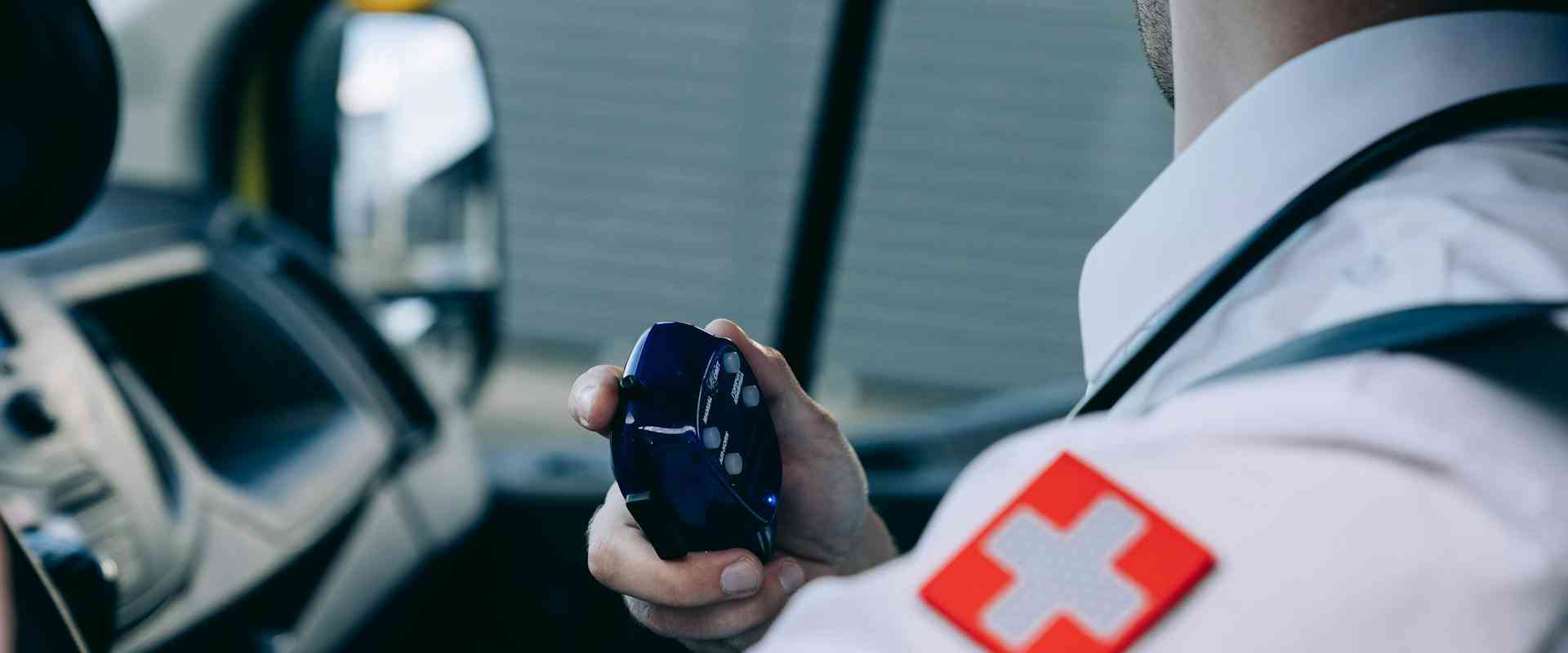Learn / Is My Loved One Using Cocaine? How to Tell If Someone Is Using Cocaine
Is My Loved One Using Cocaine? How to Tell If Someone Is Using Cocaine


April 11th, 2023| Clinically Reviewed by
In This Article
Cocaine doesn’t have to control your loved one. The first step to their recovery might be recognizing signs of use, and then you can help them find a rehab for cocaine addiction.
You both have resources for recovery. But the more you know about cocaine use, and how to spot it, can help you help the ones you love.
How to Spot Cocaine Use
Spotting cocaine use can be tricky. It has a seemingly endless list of slang names and pseudo-identities, making it hard to decipher what your loved one might be talking about. They could hide their behavior with more than sneaky names, too. But there are signs to look for1.
Physical Signs
- Dilated pupils
- Lack of appetite—it might seem like they barely eat
- Rapid weight loss
- Poor sleep
- Disheveled appearance, lack of hygiene
Emotional And Mental Signs
- Paranoid without reason
- Hyperactivity—“bouncing off the walls”
- Irritability
- Anxious, more so than usual
- Extreme startle reactions, like jumping at the sound of a cabinet shutting
Along with knowing the signs of cocaine use, you can also familiarize yourself with the street names for cocaine.
Slang Names for Cocaine
The nicknames for cocaine2 might surprise you. They’re creative, to put it positively. And they change based on the form of cocaine (crack, regular cocaine) and what it’s mixed with.
There’s a lot to keep track of, but knowing even just a few can help.
- Snow
- Stardust
- Stash
- Bouncing Powder
- Coke
- Coca
- Flake
- Devil’s Dandruff
- Florida Snow
- Joy Flakes
You can also educate yourself on cocaine itself, and how it affects the mind and body.
Explore Cocaine Treatment Centers
What Is Cocaine?
Cocaine comes from the leaves of the coca plant1. It grows in South America. From there, it’s smuggled all across the globe.
Cocaine causes a rush of euphoria3, which can last 2-20 minutes. This rush comes from a build up of dopamine in the brain—dopamine stacks up on the transmitters meant to receive it4, causing an intense flood of pleasure.
Neurotransmitters like dopamine jump between nerves and target cells. If the receptors aren’t working, all the received dopamine has nowhere to go—causing the high. Altering the usual transmission of dopamine can actually change the structure and function of your brain over time.
The crash, or comedown, from this high can quickly prompt a redose, sometimes until supplies or money run out. This is considered a binge1.
You can ingest cocaine in multiple ways1. Some snort the white powder up their nose. Or, you might mix it with water and inject the mixture into a vein, using a syringe. If it’s crack cocaine, you can smoke it.
Is There a Difference Between Cocaine and Crack?
Chemically, no. Cocaine and crack are the same thing5, just in different forms. Crack isn’t any cheaper, either6. But it is more potent, easy to ingest, and wildly addictive.
Crack looks like rocks, or crystals. It’s a smokeable version of cocaine5, derived from the same coca plant as cocaine.
For crack cocaine, you might see some of these slang terms:
- Rock
- Moon Rock
- Apple Jack
- Dice
- Sleet
- Yahoo
- Yale
- Top Gun
- Base, Basing
Mucous membranes absorb cocaine and crack cocaine7. You have a huge plane of mucous membrane in your lungs—the alveoli responsible for bringing oxygen to your blood. The inhaled crack smoke absorbs into the alveoli in the lungs rapidly, causing a nearly immediate high.
A crack cocaine high fades faster, though. To avoid the crash, people might keep smoking until they run out of crack. And the more they ingest, the more likely they are to overdose and have negative long-term effects8.
The Effects of Cocaine Use
Cocaine use can lead to heart problems8, like cardiac arrest and strokes. Inhaling it as crack can cause respiratory conditions. Snorting it could completely degrade your nasal passage over time.
Short-term, the effects of cocaine could range from paranoia to seizures9. And rarely, cocaine can cause sudden death after just one use.
Repeated use takes up more and more money and time. And the more it’s used, the more your brain changes. Addiction and tolerance to the drug can set in quickly1.
Cocaine use can also have unpredictable effects, usually caused by what it’s been cut with. The cutting agent could be harmless, but that’s not always the case.
What Is Cocaine Cut With?
Dealers may cut cocaine to up their profit10, selling a “watered down” version to unsuspecting buyers. Powder cocaine could be cut with baking soda, caffeine, sugars, or anesthetics. Visually, you’d likely never know it wasn’t pure cocaine.
But cocaine could have harmful additives. Levamisole, a veterinary drug that kills parasites10, has made its way into 70% of cocaine in America. It causes necrosis11, which kills and rots the skin.
You can also mix cocaine with other drugs for new, sometimes preferred, effects.
Cocaine Mixtures
Users seeking a different high mix cocaine with other substances, like marijuana and tobacco. Nicknames for these mixtures include Woo-Woo, Woolies, Candy Flipping, Cocoa Puffs, and Boy-Girl.
Certain blends, like alcohol and cocaine, are notably more dangerous. Cocaine and alcohol react12 and form a heart-toxic chemical, cocaethylene. Heroin and cocaine mix to form a speedball9, or an opiate and depressant blend. But cocaine wears off faster than heroin, potentially slowing your breathing to null as the full sedative effect of heroin hits.
No mixture is predictable, or safe. Neither is cocaine by itself. But, for single and blended use, you can find recovery.
Treatment for Cocaine Addiction
Cocaine addiction often requires a multi-pronged approach—detox, therapy, and medications13. And the more research scientists do, the better these options become. There’s even a cocaine vaccine in the works14.
Your loved one will most likely need to detox from cocaine in a safe, clinically monitored setting. There, they’ll have constant supervision, comfort medications, and begin the therapeutic healing process. This could be at a detox center or a residential rehab with on-site detox.
Once cocaine has left their system, inner healing work can begin.
Therapy for Addiction
Therapy can address and heal the causing factors of addiction. It can also motivate and empower your loved one to commit to their recovery, even when it gets hard.
Behavioral therapies like cognitive behavioral therapy (CBT) can challenge unhelpful thoughts and beliefs15. You’ll learn to shift your perspective of yourself to one that’s more positive. Rather than thinking “I’ll never get better”, CBT would challenge the thought with “Why not?”.
Dialectical behavioral therapy (DBT)16 addresses black-and-white thinking. Your loved one can accept the problem of cocaine use and know they can get better. DBT can help with relapse too, as it helps patients identify unhelpful thoughts that could lead back to old coping mechanisms.
The 12 Steps
The 12-Step program offers a place for members to connect and recover in a respected treatment program. Members follow 12 steps together, learning responsibility, accountability, and forgiveness. And the 12 Steps can run in and out of treatment—you don’t have to be in rehab to find a local group to attend.
The 12 Steps are often called AA (alcoholics anonymous) meetings. For cocaine use, you’ll likely see them called CA (cocaine anonymous). Each uses 12-Step practices to help members stay accountable and sober.
Aftercare
Contingency management (CM) can inspire greater dedication, during and after residential treatment. CM programs usually give out money, snacks, or vouchers as a reward13. And since you’ll actually get a reward for staying sober, attending recovery meetings, and going to treatment, you might find yourself more motivated to do it.
Your loved one can also keep attending 12-Step meetings as a form of aftercare. If they go to a residential rehab, they might have the opportunity to attend alumni groups, too.
Continued therapy and medications, if prescribed, can both contribute to long-term success. That’s why they’re both common forms of aftercare for cocaine addiction. If your loved one goes to rehab, they might offer continued 1:1 therapy with the same therapist. If not, they’ll likely connect you to further therapy as part of their discharge service.
Find Power Through Recovery
If you think your loved one is using cocaine, know that they, and yourself, have recovery resources. They can find new power and hope through recovery—addiction isn’t the end.
You can browse our list of rehabs for cocaine to see pricing, reviews, insurance, and photos of each facility.
Family members, you can check out these support groups: Co-Anon, Families Anonymous, and Stronger Together.
-
Drug Fact Sheet—Cocaine. (2020). Department of Justice/Drug Enforcement Administration. https://www.dea.gov/sites/default/files/2020-06/Cocaine-2020_1.pdf
-
Cocaine. (n.d.). Retrieved March 15, 2023, from https://www.dea.gov/factsheets/cocaine
-
Cocaine (Street Names: Coke, Snow, Crack, Rock). (2019). Drug Enforcement Administration. https://www.deadiversion.usdoj.gov/drug_chem_info/cocaine.pdf
-
Abuse, N. I. on D. (--). What are some ways that cocaine changes the brain? National Institute on Drug Abuse. https://nida.nih.gov/publications/research-reports/cocaine/what-are-some-ways-cocaine-changes-brain
-
Cocaine and crack drug profile | www.emcdda.europa.eu. (n.d.). Retrieved March 15, 2023, from https://www.emcdda.europa.eu/publications/drug-profiles/cocaine_en
-
Caulkins, J. P. (1997). Is crack cheaper than (Powder) cocaine? Addiction (Abingdon, England), 92(11), 1437–1443. https://pubmed.ncbi.nlm.nih.gov/9519487/
-
Cia-contra-crack cocaine controversy. (n.d.). Retrieved March 15, 2023, from https://oig.justice.gov/sites/default/files/archive/special/9712/appb.htm
-
Abuse, N. I. on D. (--). What are the long-term effects of cocaine use? National Institute on Drug Abuse. https://nida.nih.gov/publications/research-reports/cocaine/what-are-long-term-effects-cocaine-use
-
Abuse, N. I. on D. (--). What are the short-term effects of cocaine use? National Institute on Drug Abuse. https://nida.nih.gov/publications/research-reports/cocaine/what-are-short-term-effects-cocaine-use
-
Solomon, N., & Hayes, J. (2017). Levamisole: A high performance cutting agent. Academic Forensic Pathology, 7(3), 469–476. https://doi.org/10.23907/2017.039
-
Logsetty, S., & Shahrokhi, S. (2020). Levamisole: Adulterated cocaine-induced soft tissue necrosis. In M. G. Jeschke, L.-P. Kamolz, F. Sjöberg, & S. E. Wolf (Eds.), Handbook of Burns Volume 1: Acute Burn Care (pp. 575–576). Springer International Publishing. https://doi.org/10.1007/978-3-030-18940-2_47
-
Farooq, M. U., Bhatt, A., & Patel, M. B. (2009). Neurotoxic and cardiotoxic effects of cocaine and ethanol. Journal of Medical Toxicology, 5(3), 134–138. https://doi.org/10.1007/BF03161224
-
Abuse, N. I. on D. (2020, August 20). Commonly used drugs charts. National Institute on Drug Abuse. https://nida.nih.gov/research-topics/commonly-used-drugs-charts
-
Abuse, N. I. on D. (--). How is cocaine addiction treated? National Institute on Drug Abuse. https://nida.nih.gov/publications/research-reports/cocaine/what-treatments-are-effective-cocaine-abusers
-
McHugh, R. K., Hearon, B. A., & Otto, M. W. (2010). Cognitive-behavioral therapy for substance use disorders. The Psychiatric Clinics of North America, 33(3), 511–525. https://doi.org/10.1016/j.psc.2010.04.012
-
Dimeff, L. A., & Linehan, M. M. (2008). Dialectical behavior therapy for substance abusers. Addiction Science & Clinical Practice, 4(2), 39–47. https://www.ncbi.nlm.nih.gov/pmc/articles/PMC2797106/
Return to Resource Library
Our Promise
How Is RehabPath Different?
We believe everyone deserves access to accurate, unbiased information about mental health and addiction. That’s why we have a comprehensive set of treatment providers and don't charge for inclusion. Any center that meets our criteria can list for free. We do not and have never accepted fees for referring someone to a particular center. Providers who advertise with us must be verified by our Research Team and we clearly mark their status as advertisers.


















